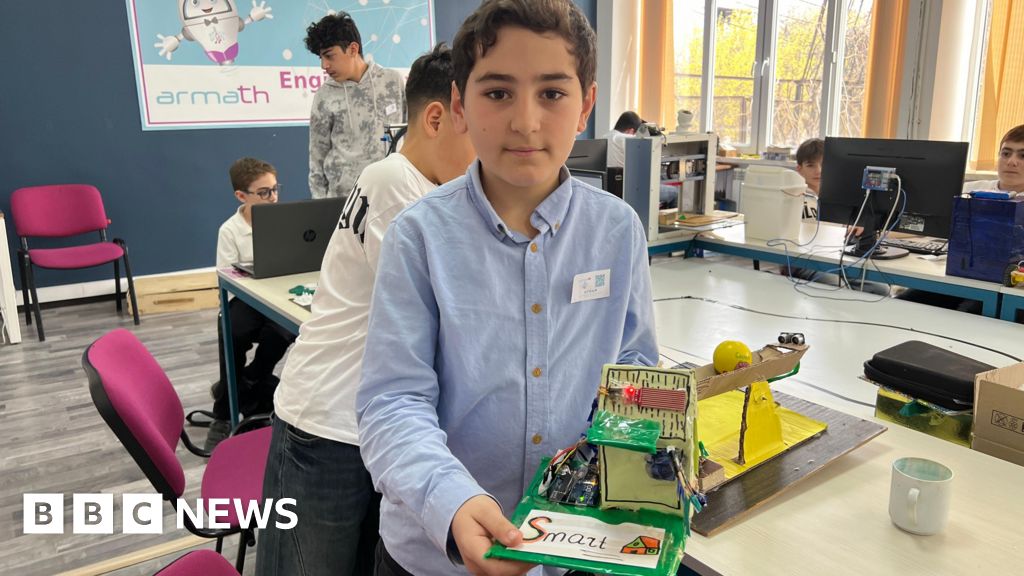The writer is senior fellow at the American Enterprise Institute and an adviser to Gallos Technologies
Since Russia invaded Ukraine, a new kind of fleet has been congregating in the Kerch Strait. Observers in this narrow channel — which connects the Sea of Azov with the Black Sea and thus the rest of the world — are recording record volumes of vessels with gaps in their automatic identification transmissions, suggesting they want to hide their movements. This fleet of clandestine ships has become a key factor in the surprising resilience of Russia’s wartime economy. And its intensifying operations suggest Moscow’s defiance of western sanctions will only continue.
Under international maritime regulations, all commercial ships except the very smallest are obliged to broadcast an Automatic Identification System (AIS) to make other vessels aware of their position. During the third quarter of 2020 — a largely normal period in global shipping — 42 vessels travelling through the Kerch Strait turned off their AIS a total of 86 times, according to new data from Lloyd’s List Intelligence. There may be legitimate reasons for this; sometimes AIS malfunctions. In any case, these 42 vessels were only a tiny percentage of around 10,000 ships that passed the Strait during an average year before Russia’s invasion of Ukraine.
Since then, however, the number of ships going dark in the Strait has skyrocketed. Immediately after the invasion, in the second quarter of 2022, 468 ships went dark 1,126 times. And during the first quarter of this year, the darkness reached unprecedented heights: 586 ships, the vast majority of them Russian-flagged, enacted 1,753 AIS gaps. Some may have been simply trying to avoid detection by military vessels at a time of conflict, but there are likely other factors at play too.
“This spike is so extraordinarily high that it makes you conclude there are things the Russians want to hide”, said Bridget Diakun of Lloyd’s List Intelligence. “For various reasons, some legitimate and some not, the Russians likely don’t want people watching them”. Some three quarters of the AIS gaps involved cargo vessels; one quarter were tankers, Lloyd’s figures show. So a great deal of dry cargo, as well as smaller volumes of oil and other liquid, were leaving the Sea of Azov under the cover of AIS darkness.
The Kerch Strait is a standard Russian grain export route: smaller vessels travel down from Russian ports in the Sea of Azov and conduct ship-to-ship transfers in the southern part of the channel. But if these exchanges happen in conjunction with AIS gaps, it makes the cargo much harder to trace. Russia, of course, can import and export as it likes from its own ports. However, following the invasion, Moscow could also be transporting contraband produce from occupied Ukrainian ports in the Sea of Azov. The AIS-gap spike could be evidence of Russian efforts to hide the movement of stolen Ukrainian grain, suggests Diakun.
Ukraine’s allies, meanwhile, are under an obligation to comply with sanctions aimed at weakening the Kremlin. The fact that a number of vessels responsible for AIS gaps were registered to Panama and St Kitts and Nevis suggests that these flag-of-convenience states are tolerating the blackouts. Several countries — including key Russian trading partners like India, China and the UAE — have neither condemned the Ukraine invasion nor signed up to the western-led sanctions.
In theory, AIS refuseniks should face punishment, since they increase the collision risk for nearby vessels. Neil Roberts, secretary of the maritime insurance industry’s risk assessment body the Joint War Committee, says “it is difficult to see what the law-abiding side of industry can do about deliberate criminal evasion, since it doesn’t have constabulary powers”. Indeed, the UN’s International Maritime Organization is not a global shipping police. A 2003 treaty gives Russia and Ukraine the right to inspect commercial vessels sailing through the Kerch Strait — but neither is likely to do so now. And while western insurers, who dominate maritime underwriting, steer clear of companies exposed to sanctions, the Kremlin now provides alternative maritime cover.
The explosive growth of AIS gaps in the Kerch Strait suggests this surreptitious shipping will facilitate Russian trade for some time to come. The geopolitics of sanctions has also changed radically in the past three decades. During the cold war, the west’s embargoes were effective because its economic strength allowed misbehaving countries few substitute trading partners. Today China, India, the UAE, Saudi Arabia and others can easily help sanctions targets evade these curbs and win a bargain in the process. As such, AIS darkness is a parable of war, peace and globalisation today.
Credit: Source link











